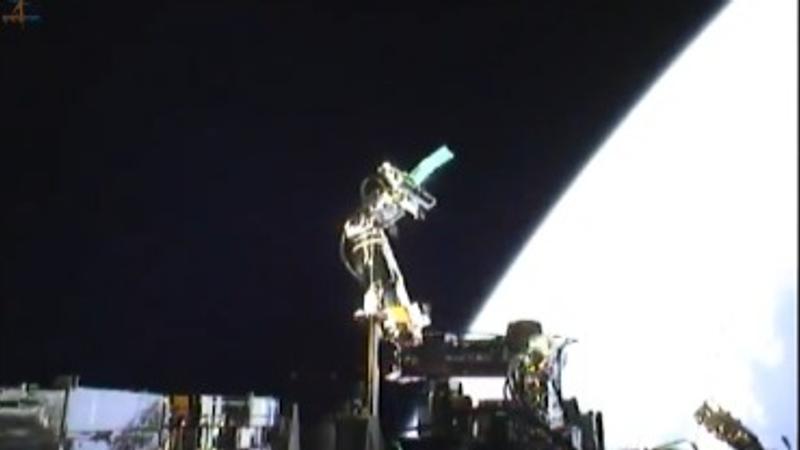Published 05:23 IST, January 7th 2025
ISRO Demonstrates Robotic Technology, Successfully Captures Space Debris With Robotic Arm | VIDEO
ISRO has achieved a major milestone with the successful demonstration of its sophisticated robotic arm, part of the SpaDeX mission by capturing space debris

The Indian Space Research Organisation (ISRO) has achieved a major milestone with the successful demonstration of its sophisticated robotic arm, part of the Space Docking Experiment (SpaDeX) mission. The ISRO released a new video on Monday showing the robotic arm capturing tethered space debris with impressive precision. The arm uses advanced technologies such as visual servoing, motion prediction, and a parallel end-effector to perform delicate operations.
The Indian space agency’s latest achievement marks a crucial step forward in space exploration. After successfully capturing tethered debris, ISRO’s robotic manipulator is now capable of capturing free-floating debris in space and even refuelling tethered and free-floating spacecraft. This capability is vital for maintaining space missions and cleaning up the growing issue of debris in Earth's orbit.
The Debris Capture Robotic Manipulator (DC-RM) has been developed by ISRO’s Vikram Sarabhai Space Centre (VSSC), featuring seven movable joints and an inchworm-like mechanism to reposition itself on the PS4-Orbital Experiment Module (POEM-4) platform. The arm's sophisticated design includes advanced robotic joints, arm controllers, cameras for precise movement, and obstacle-avoidance software, all powered by a high-performance processor.
Key Objectives Of SpaDeX Mission: Robotic Arm’s Ability, Docking Capabilities
The ISRO officials stated that one of the key objectives of the SpaDeX mission is to demonstrate the robotic arm’s ability to operate effectively over a large area in orbit. This success also sets the stage for future robotic technologies, particularly for India's planned space station, the Bharatiya Antariksh Station (BAS). The arm’s functions are designed to include visual inspection, movement across large areas, and cable-free operations using a "digital twin" model for remote task execution.
The SpaDeX mission is also focusing on enhancing autonomous rendezvous and docking capabilities. This involves controlling one spacecraft using the Attitude Control System of another in a docked configuration, which is critical for future deep-space and manned missions.
As per the experts, ISRO’s focus on robotic technology has the capability to reshape the future of space operations. The successful demonstration of debris capture technology contributes to improving space operations and maintaining a clean space environment, which is crucial as the number of active satellites and space debris continues to rise.
CROPS Sprouted First Leaves In Space
Earlier on Monday, ISRO also celebrated another remarkable achievement. The Compact Research Module for Orbital Plant Studies (CROPS) aboard the PSLV-C60 mission successfully sprouted its first leaves after sending cowpea seeds into space. The CROPS experiment, launched on December 30, last year, aims to study how plants adapt and grow in space conditions, paving the way for advancements in space agriculture and long-term human space exploration.
These advancements by ISRO demonstrate India’s growing expertise in space technology and its commitment to pushing the boundaries of space exploration. With these cutting-edge technologies, ISRO is poised to play a leading role in future space missions, including those to the Moon, Mars, and beyond.
Updated 05:23 IST, January 7th 2025



